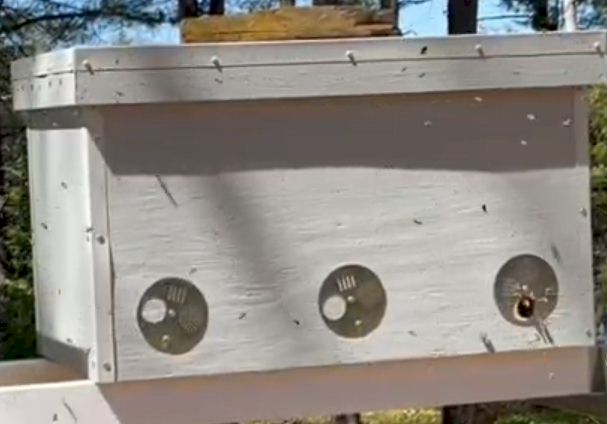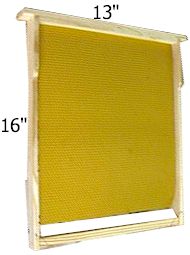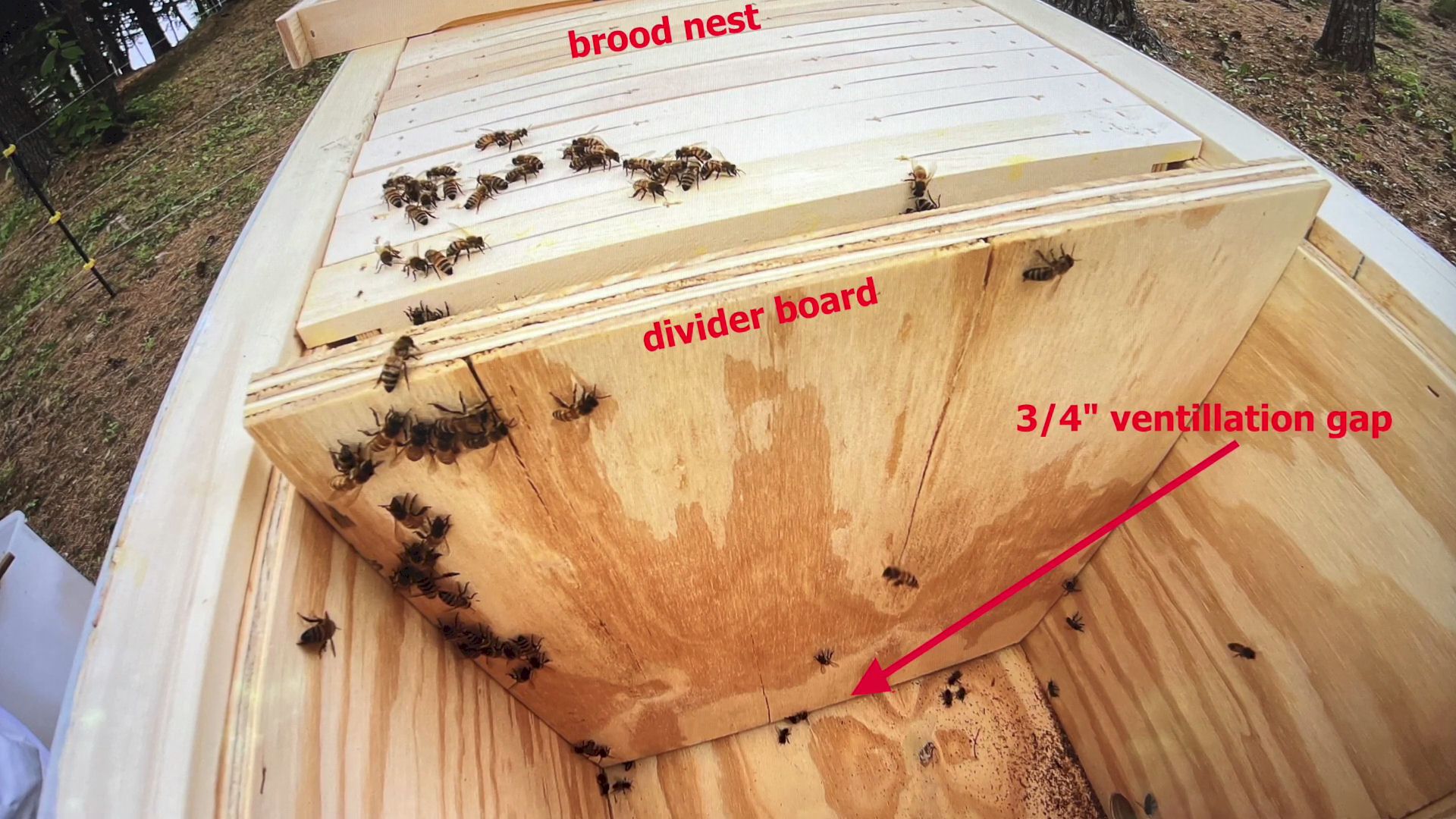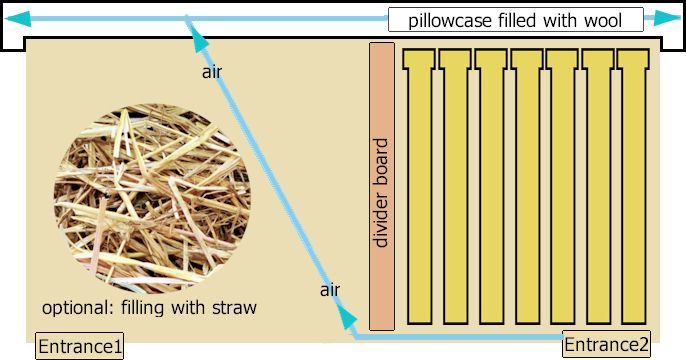

| Layens horizontal hive and its frame - outside and inside views | |
|---|---|


|

|


|
A moisture-control divider board for wintering in Layens hives - food-grade silica gel packs under a stapled metal mesh. ECO plywood and wood.
This is an auxiliary moisture control - the main moisture control is via a natural wool-filled pillow on top of the brood nest. The metal mesh does not face the bees - faces the opposite side. Also, the bees cannot enter it because of the mesh. Six 100g silica gel packs per 1 divider board. 2 such divider boards for a 20-frame layens hive. |